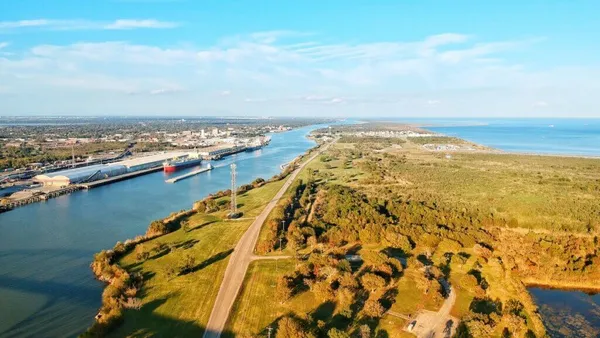Dive Brief:
- Major Wall Street firms and publicly traded construction companies are eagerly awaiting President Joe Biden’s Build Back Better infrastructure plan, which he said he will detail in his first State of the Union address scheduled for Feb. 23.
- Expectations for a multitrillion dollar initiative have already sent public construction companies’ stocks higher, as institutional investors and contractors that perform civil work signal their bullishness on the issue.
- Major institutional investor Blackstone, the world’s largest manager of alternative assets, said on its recent earnings call it raised $14 billion for a fund tailored to invest in infrastructure, with deal activity accelerating in both the U.S. and Europe. “We could see more dollars into infrastructure, an area [in which] we haven't underwritten a lot of corporate activity or government activity,” said Jon Gray, the firm’s chief operating officer, during the call. “That could change with a big push by the government.”
Dive Insight:
The trend is developing as professional and individual investors alike game which publicly traded construction companies are likely to snare a windfall from Biden’s infrastructure push. While the plan is forthcoming, the president pegged it at as much as $2 trillion in the weeks leading up to his inauguration.
Construction companies, and their investors, have taken notice of that number.
"While the new administration is just getting started, we expect that bill to support the repair and expansion of existing highway and bridge systems," said David Constable, Fluor's CEO, during the company's strategy day presentation last week. "Fluor is well positioned to take part in this U.S. stimulus initiative."
The combined push from companies and investors has resulted in articles on stock-picking sites such as Seeking Alpha. One article listed Jacobs as a potential winner and another detailed Tutor Perini’s advantages, while noting that since the early 2000s, infrastructure spending has been markedly higher under Democratic administrations.
Tutor Perini, AECOM and Jacobs saw significant stock spikes Jan. 6, the day the presidential election results were certified and the results of the Georgia Senate race were called, giving Democrats control of Congress:
ACM Quotes by TradingView
J Quotes by TradingView
While former President Donald Trump, a real estate developer, had ambitions for a large-scale infrastructure spending bill, his efforts were largely hamstrung by Congress balking at the cost. Biden will similarly have hurdles to get approval of his plan, but with the House and Senate controlled by Democrats, even narrowly, business leaders think he has a better chance of success.
“For the first time in a long time, I feel really confident that this administration will definitely get the infrastructure spending going,” said Deborah Geideman, head of global international relations at Jacobs, during a virtual conference last week. “We also need to have some private-public partnerships and look at how to leverage that government funding.”
But the possibility of that happening can't come soon enough. Construction trade groups have noted that the industry is likely to suffer from weakening demand unless Congress and the Biden administration enact new recovery measures, including backfilling local construction budgets and passing new infrastructure funding.
“The near-term outlook for nonresidential construction is not especially optimistic,” Associated Builders and Contractors Chief Economist Anirban Basu said last week.
The Associated General Contractors of America said the new federal investments are needed to sustain construction employment levels in many parts of the country until private sector demand recovers.
“Even as they work out details on the latest coronavirus relief plan, Congress and the Biden administration need to start work on measures to rebuild the economy and recover lost jobs,” said Stephen E. Sandherr, the association’s chief executive officer, in a news release. “One of the most effective ways to help the newly unemployed will be to rebuild aging infrastructure and maintain state and local construction budgets.”













